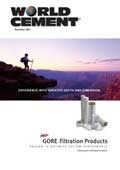Editorial comment
In the 1980s, the then British Prime Minister, Margaret Thatcher, was noted for uttering the slogan “There is no alternative”, as she demonstrated her government’s belief that free-market capitalism was the only possible economic theory. This effectively meant that the economic development of lesser developed countries was to be left to market forces. In 2001 – 02, The McKeever Institute of Economic Policy Analysis, a small, privately funded institute dedicated to studying the analysis of economic policy, set up the project, ‘There Are Alternatives’. The object was to find and publicise alternative economic models based on what the Institute regarded as, “a need for the creation of alternative economic models so that all people can choose how much to enter or how much to withdraw from the global economy”. Essays were invited and a prize of US$100 was offered for the five winning entries. Titles ranged from ‘Tax distortion in the global economy’, to ‘Self-financing development for the world’s poor’. Some of the essays relied on local trading currencies of LETS systems to partially or completely disengage from the global system.
Register for free »
Get started now for absolutely FREE, no credit card required.
If anybody cries ‘There is no alternative’ in today’s global cement industry, they will find themselves out of step with the industry and more than likely out of a job! But in the remote possibility that somebody out there has not caught up, alternatives are in and there is no getting away from them! Almost every paper due to be delivered later this month at the AUCBM Conference (see page 26) in Beirut, and the 7th Cemento Hormigon Colloquia (see page 79) in Malaga, will be devoted to – or certainly make reference to – the increased use of alternatives fuels (AFs) or alternative materials in the cement production process. It was the same at the recent VDZ Congress in Dusseldorf, where many authors provided case studies of how they are striving to reduce CO2 emission levels and energy consumption in their plants. Björn Stigson, President of the World Business Council for Sustainable Development, spends much of his time travelling the world speaking to industrialists, NGOs and companies about the role of business in which companies and countries must deal with the challenges of energy access, water availability, urbanisation, and of course climate change, stressing that climate change is not simply a short term priority. In Düsseldorf (see page 21), where he gave the Keynote Address, he praised the cement industry for addressing the problem of CO2 emissions and actually managing to reduce them, thereby setting an example for other industries. He will be lobbying hard at next month’s UN Climate Change Conference in Copenhagen where he will campaign along the lines of a low carbon resource-efficient economy that will help mitigate climate change. He confessed to having low expectations on the outcome of this conference where answers to the questions such as 'what type of commitments are countries willing to accept?', or 'who will support the developing countries?' may be fudged or even avoided. That said, he still predicts that there will be a lot of changes and much competition over the next 50 years. While Germany is currently the main exporter of green technology, China is concerned about climate change and its effects on the poorer countries so it will be looking to take over that slot.
No alternatives? We don’t think so! If you have time and are interested visit, the website of The McKeever Institute of Economic Policy at www.mkeever.com and read through those five essays.


